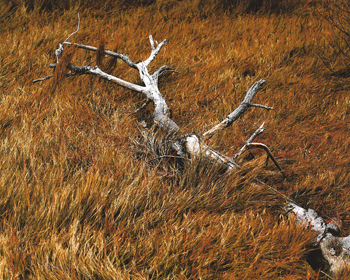 What are ecosystem services?
What are ecosystem services?
The people of Maryland benefit from the natural environment in many different ways. Forests clean the air, wetlands clean the water and the Bay provides fish and crabs. These benefits people gain from the environment can be collectively referred to as Ecosystem Services. Though ecosystem services can be categorized in different ways, they are commonly divided into four major categories: provisioning services (e.g. timber, firewood, food), regulating services (e.g. water purification, wildlife habitat), supporting services (e.g. nutrient cycling, soil formation) and cultural services (e.g. recreation, spiritual benefits. Maryland’s natural areas, from its mountains and streams to coastal wetlands and the Chesapeake Bay, play a fundamental role in supporting the economy and quality of life in Maryland.
Our work in the Watershed and Climate Services
We are working to provide information on the economic value of ecosystem services and map those values across the state. So far we have focused on non-market ecosystem services because those benefits are not typically considered in decision making and realizing these values will make the largest impact. For example, we understand that a forest will take up nutrients and reduce stormwater runoff, but we don’t immediately know the amount of nutrients or stormwater and its economic value. Our work allows these benefits and others to be quantified.
Seven different ecosystem services (carbon sequestration, nitrogen removal, stormwater mitigation and flood prevention, wildlife habitat and biodiversity, air pollutant removal, groundwater recharge, and surface water protection) have been quantified and mapped for the state. This information can be found on the
Maryland GreenPrint web viewer and will shortly be available for viewing and download from Maryland iMap. The Maryland Ecosystem Service report below details the approach we have taken in assessing the value of ecosystem services in the state.
Maryland Department of Natural Resources will be using this information to help prioritize and justify our land acquisitions, restoration activities and inform the public on the benefits everyone receives from natural lands. We hope our partners in local government, the business community, non-profits and the public will utilize this information as well.
Maryland Department of Natural Resources regularly participates in the updating of
Maryland's Greenhouse Gas Inventory (led by MDE), by helping to quantify the amount of carbon sequestered by coastal and marine environments (blue carbon) and by terrestrial systems (green carbon). In 2023, MDNR partnered with The Nature Conservancy (TNC) and Environmental Science Associates (ESA) to understand the possibilities of funding marsh restoration or protection projects through the selling of blue carbon credits on a carbon offset market. This resulted in the publication of a feasibility study, linked below under publications.
Publications
Other Resources
-
The Economics of Ecosystems and Biodiversity (TEEB)
A global initiative part of the UN Environment Programme focused on “making nature’s values visible”. Its principal objective is to mainstream the values of biodiversity and ecosystem services into decision-making at all levels. It aims to help decision-makers recognize the wide range of benefits provided by ecosystems and biodiversity, demonstrate their values in economic terms and, where appropriate, suggest how to capture those values in decision-making.
-
United States Environmental Protection Agency EnviroAtlas
The EnviroAtlas provides interactive resources that allow users to discover, analyze, and download data, maps, and other information. It can be used to inform decision-making at multiple scales using information on the benefits people receive from nature or "ecosystem services".
-
United States Department of Agriculture Office for Environmental Markets
The USDA Office for Environmental Markets consolidates information on markets for greenhouse gasses, water quality, water quantity, wetlands, and habitats that are functioning or in development across the United States. This includes information on how to construct ecosystem service markets and factors that influence their success or failure.
-
Willamette Partnership
This organization began in the State of Oregon but now serves the entire western United States, providing resources for ecosystem accounting, ecosystem service market establishment, and building capacity and support for these types of programs. They are likely the best example of how ecosystem service markets can be leveraged for effective implementation of policy goals in the US.
Contact Information
Elliott Campbell
Center for Economic and Social Science
Watershed & Climate Services
Department of Natural Resources
580 Taylor Ave.
Annapolis MD 21401
410-260-8702
[email protected]